Unforeseen incidents and accidents can happen in various settings, such as workplaces, schools, hospitals, public places, or other locations. An incident can be any event that affects the regular course of business or causes harm to an individual within the organization. Inquiries and investigations typically follow incidents to determine the cause, victims, damages, and preventive measures. Incident reports serve as an official record of an incident, detailing the facts and circumstances of the event.
They are commonly used in a wide range of industries and contexts, including but not limited to healthcare, law enforcement, workplace safety, transportation, and public safety.
This document is generally considered confidential and may be used for internal purposes, such as identifying areas for improvement or addressing safety concerns, or for external purposes, such as legal or insurance purposes.
Incident Report
An incident report is a written, accurate recount of an event that may have resulted in injury, damages, death, or disruptions of routine activities in an organization.
Incidents may be described as follows:
- Any occurrence that causes disruption or interference within an organization
- Any action that poses a significant risk to the members of an organization
- A situation that affects an organization’s systems and operations
- A situation that attracts negative publicity
This document typically includes information about the date, time, and location of the incident, as well as a description of what happened, the individuals involved, any injuries or damages sustained, and any actions taken to address the incident. This information should be captured in the report as soon as the occurrence took place to ensure details are captured accurately and factually.
Reasons for Reporting Incidents
A report is primarily a communication tool that informs an organization’s stakeholders of incidents within the organization. The document is a long-form or detailed account of the type of incident, cause or probable cause, and response actions.
It uses the information it provides to determine what actions need to be taken to prevent a repeat of the incident in the future during investigations and analysis. It is used to devise safety protocols and policies to protect the workplace.
Incident Report Templates
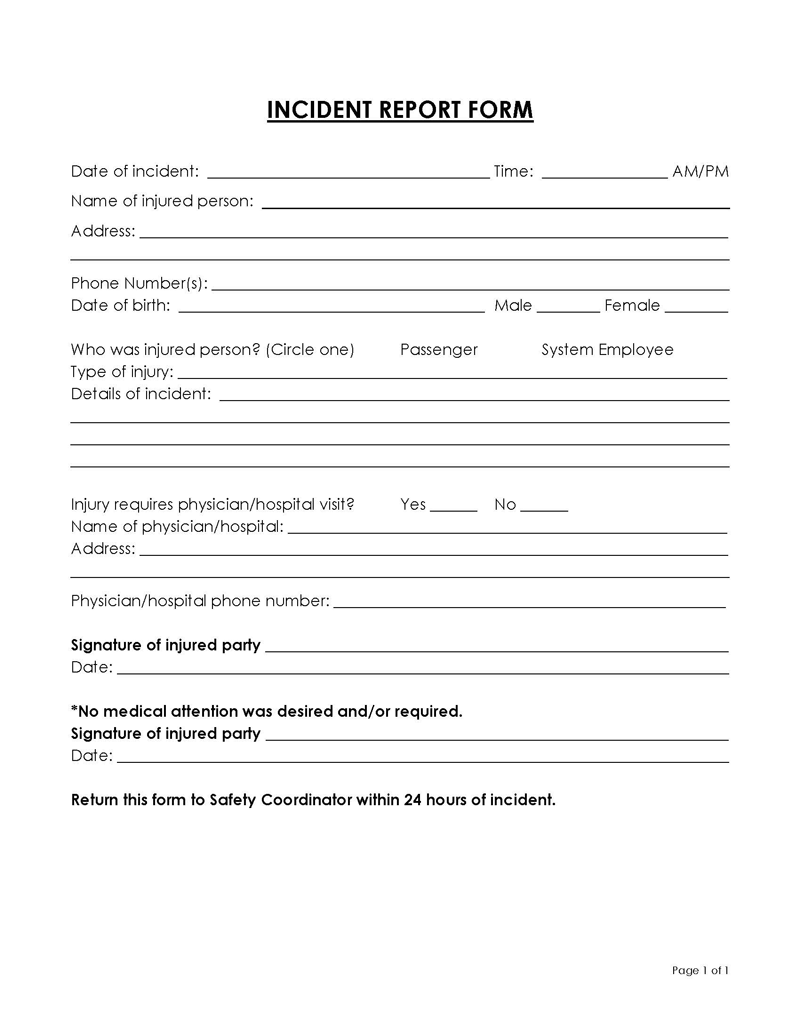
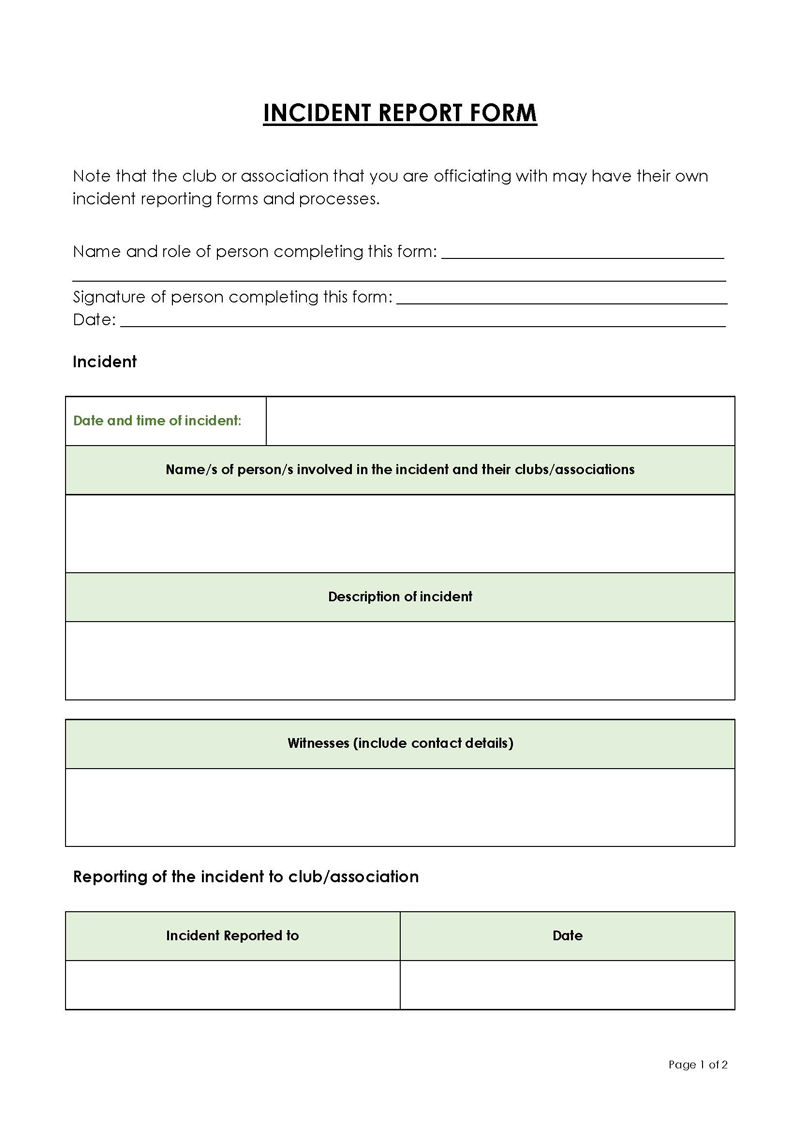
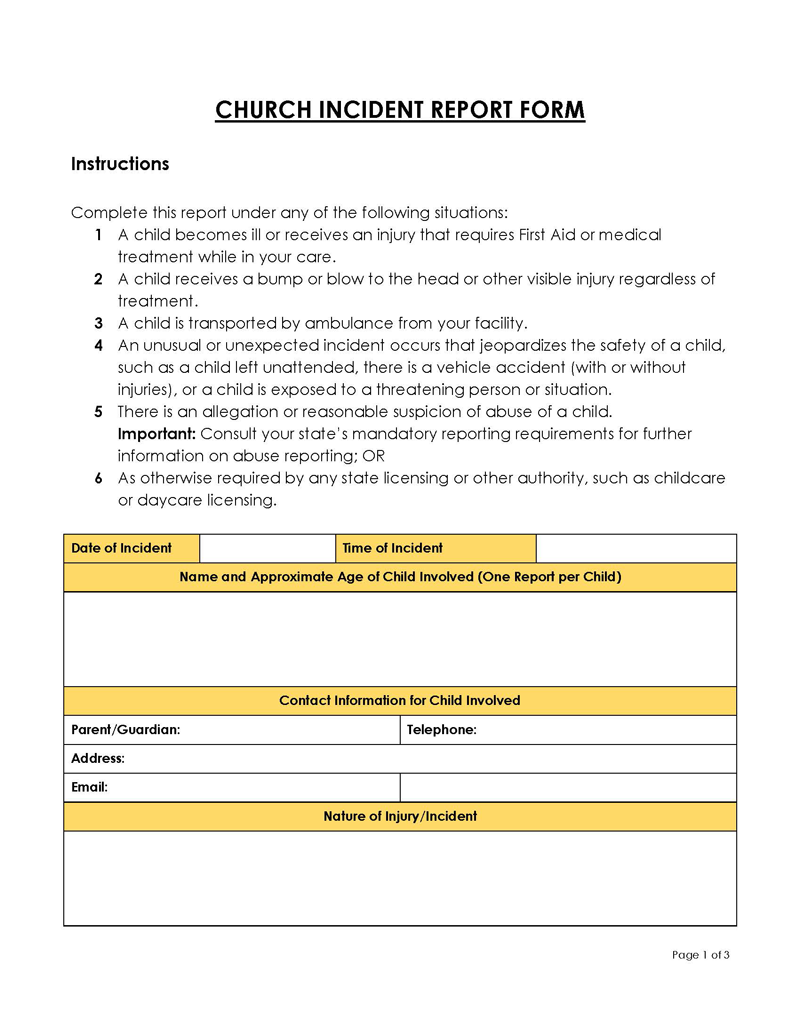
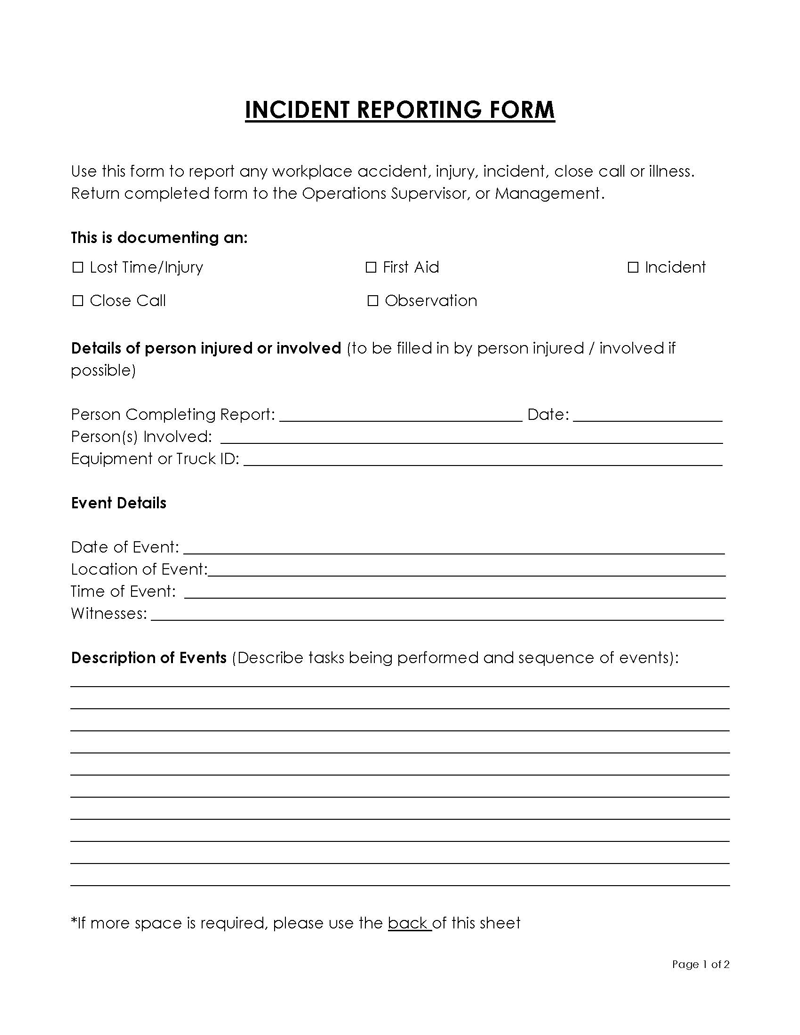
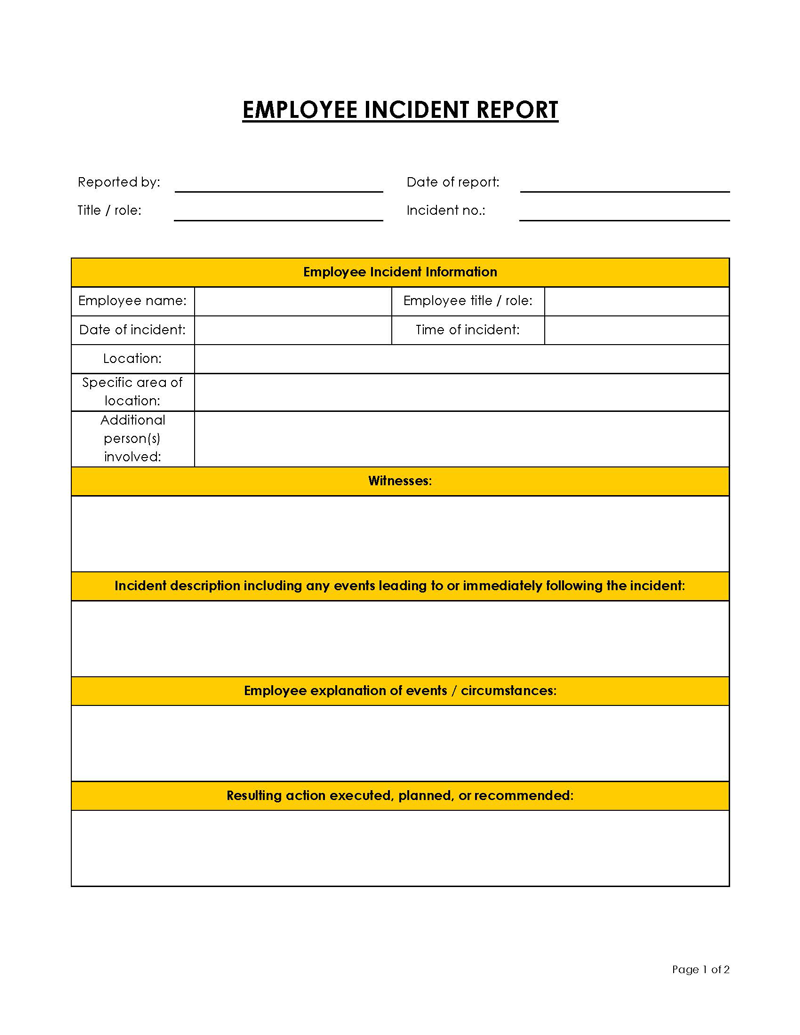
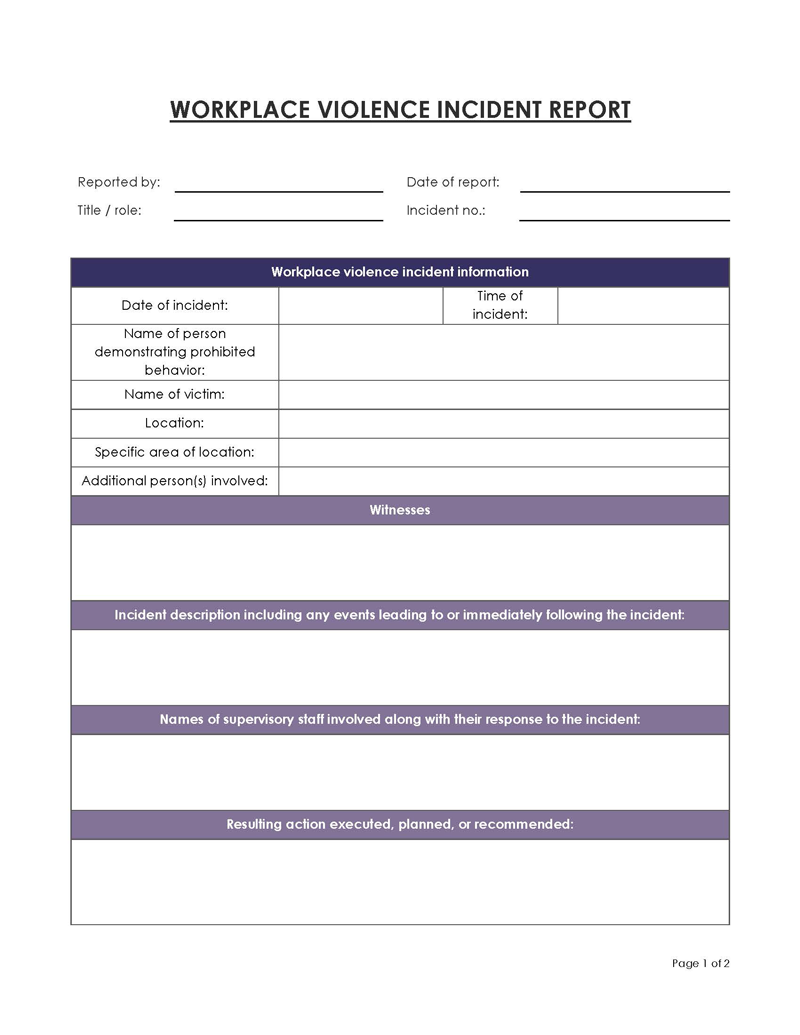
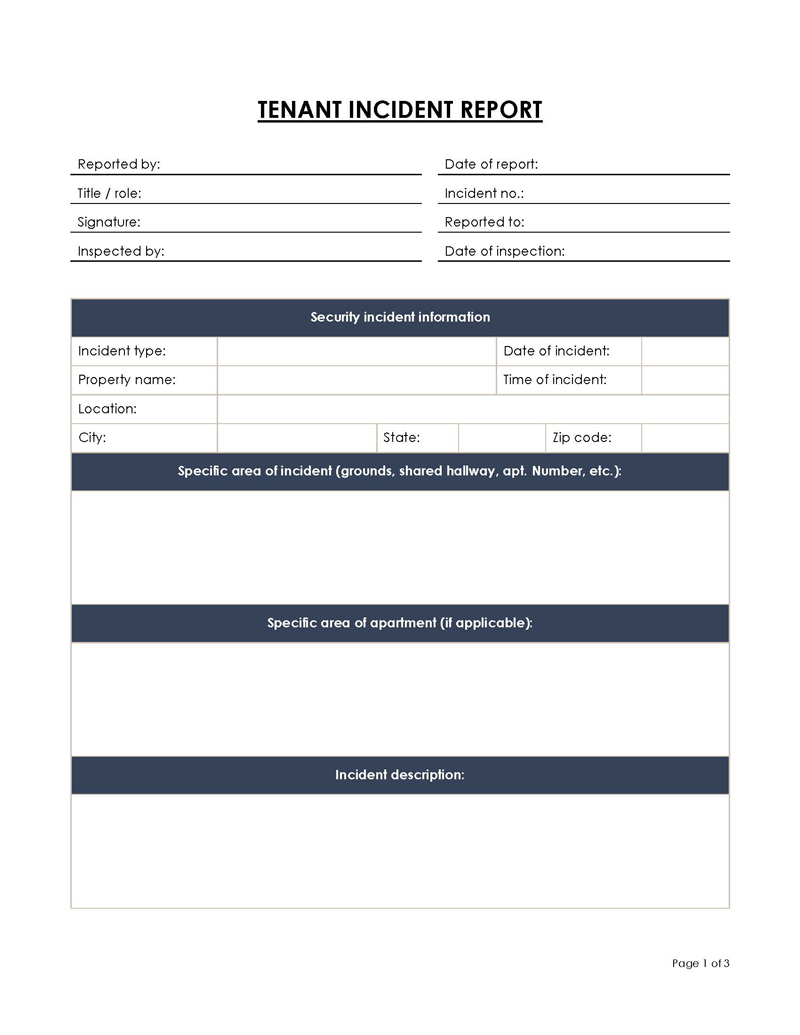
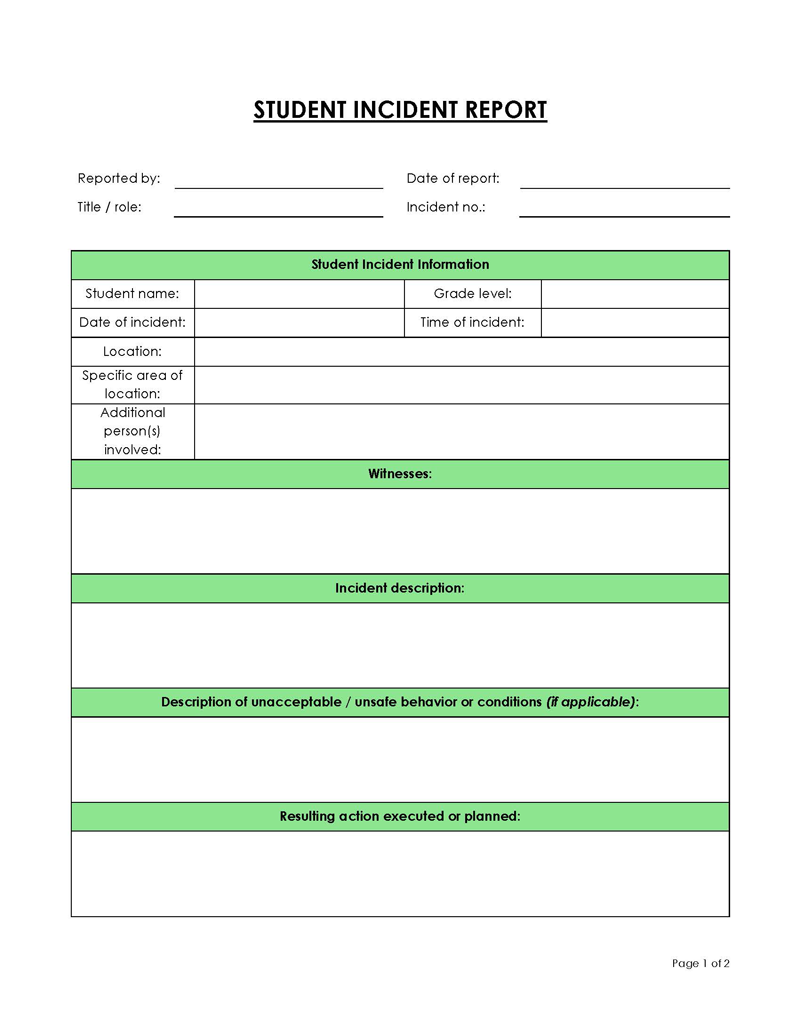
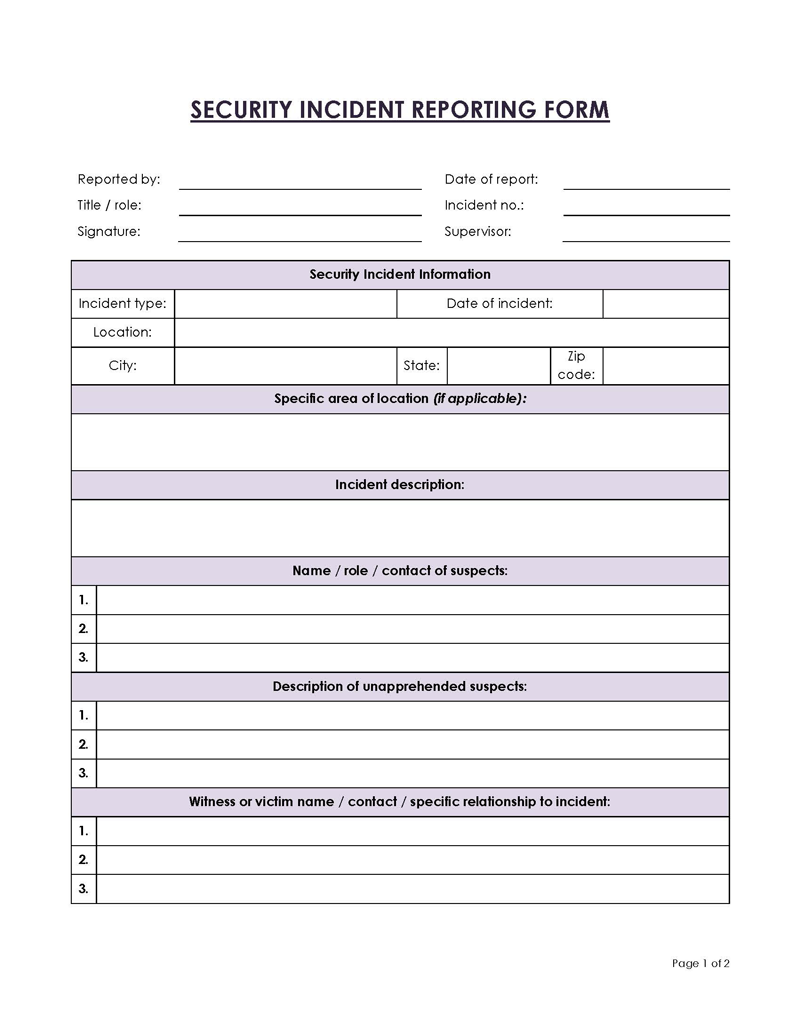
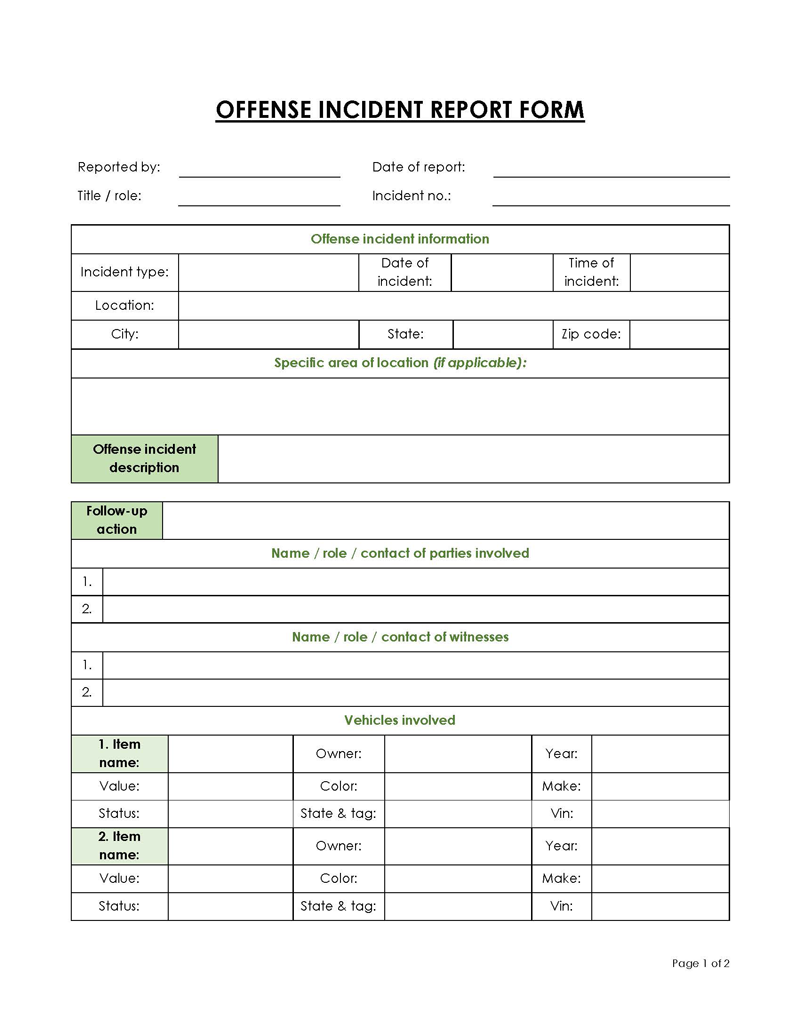
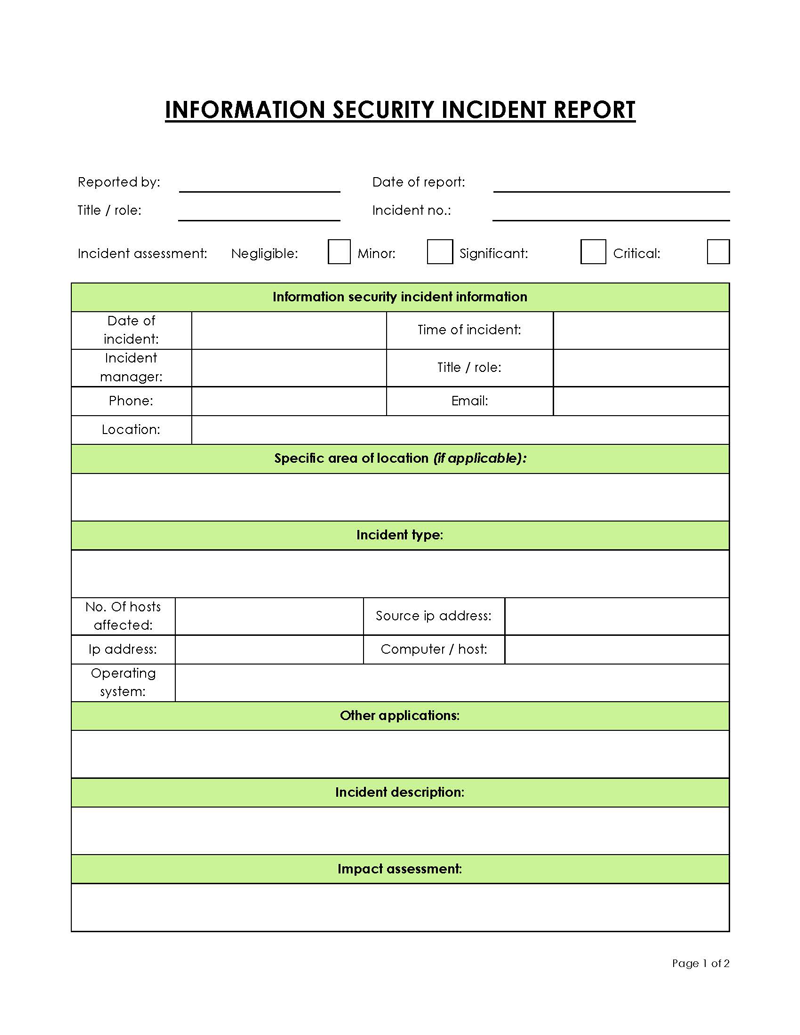
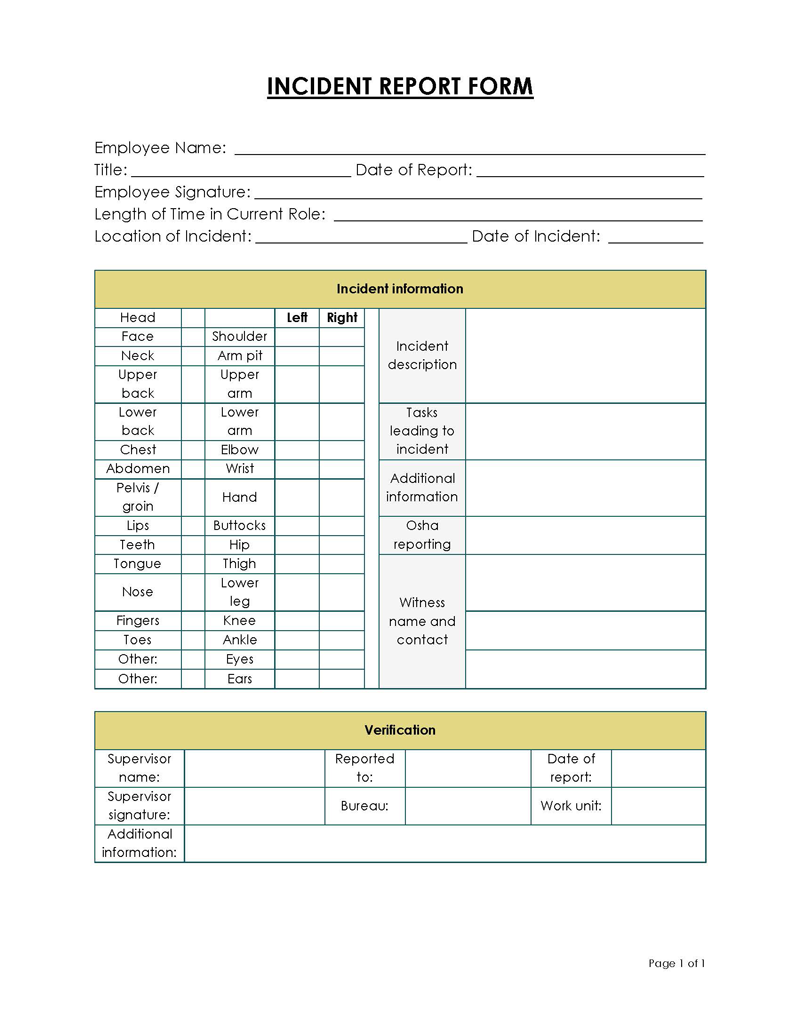
When Should It be Used?
A report should be used in the following situations:
When an incident takes place
They are typically used to document unexpected or unplanned events that deviate from normal operations or expected outcomes. Examples include workplace accidents or injuries, security breaches, equipment failures, property damage, near-misses, or other unexpected events that impact the safety, security, or normal functioning of an organization or its stakeholders.
When there is a need for documentation
These reports serve as an official record of incidents, capturing important details such as the date, time, location, description of the incident, individuals involved, and actions taken. As such, they provide documentation that can be used for various purposes, such as legal, regulatory, compliance, insurance, or internal record-keeping.
When an investigation or analysis is required
These reports are used as a basis for investigating and analyzing incidents to determine their causes, contributing factors, and consequences. Documenting an incident can help identify patterns or trends, conduct root-cause analysis, and determine the need for corrective actions.
These reports may be used by organizations to understand why incidents occurred and to prevent similar ones from happening in the future.
When communication or reporting is necessary
Incident reports facilitate communication within an organization or with external entities. They can be used to report to relevant stakeholders, such as supervisors, managers, health and safety personnel, compliance officers, or regulatory agencies. This document provides a structured format for sharing information, ensuring that relevant parties are informed and appropriate actions are taken.
When there is a legal or liability requirement
Incident reports may be required for legal or liability purposes. They can provide documentation in cases of legal disputes, insurance claims, or regulatory audits. They can help establish a factual and objective account of what occurred, provide evidence in cases of legal or liability claims, and protect the interests of the organization.
Incident Report Vs. Police Report
In contrast to an incident report, which can be prepared by anyone within the organization, a police report is written by the first officer on the scene of the crime. They are usually followed by a thorough investigation, during which an incident report can be used to support claims made in the police report.
Key Users of Incident Reports
Incident reports can be used by various individuals or entities, depending on the specific context. Some common users include:
- Employees and workers
- Supervisors and managers
- Health and safety personnel
- Compliance and regulatory agencies
- Legal and insurance representatives
- Organizational leaders and decision-makers
These users may utilize these reports for purposes such as reporting incidents, initiating investigations, implementing corrective actions, monitoring compliance, assessing risks and liabilities, and making informed decisions. It serves as a vital tool for ensuring appropriate actions are taken to address incidents and prevent future occurrences.
Format of Incident Report
A comprehensive report should include the following information: what, who, when, how, and where the incident occurred. This information should be stated in the third person. Additionally, it must be objective and should therefore be based only on facts and not on personal opinions or biases.
A template should typically include the following key sections or fields:
- Incident Information: This section captures basic details about the incident, such as the date, time, location, and description of what occurred.
- Reporter Information: This section captures the details of the person or entity reporting the incident, including their name, contact information, and role or position.
- Involved Parties: This section captures information about individuals or entities involved, including their names, roles, and contact information. This may include employees, witnesses, or other individuals directly or indirectly involved in the incident.
- Incident Description: This section provides a detailed description of the incident, including the sequence of events, the nature of the incident, and any contributing factors or causes.
- Documentation and Evidence: This section allows for the attachment or description of any relevant documents, photographs, or other evidence related to the incident, such as witness statements, photos, or video recordings.
- Actions Taken: This section captures any immediate actions taken in response to the incident, such as first aid provided, notifications made, or emergency responses initiated.
- Investigation and Analysis: This section may capture the results of any investigation or analysis conducted on the incident, including root cause analysis, findings, and recommendations for preventive measures.
- Follow-up and Resolution: This section captures any follow-up actions, such as corrective actions implemented, communication with stakeholders, and ongoing monitoring or review.
- Signature and Date: This section may include spaces for the signatures of the reporter, supervisor, and any other relevant parties, as well as the date the report was completed.
What Happens After You File the Report?
When an accident occurs, reporting is usually not the last step that an organization takes. An investigation by a task force or committee will often ensue.
After a report has been filed, the following steps may typically be taken:
Review and analysis
An extensive analysis is conducted to establish the causes of the incident. It is conducted by appropriate personnel, such as supervisors, managers, or designated individuals, to assess the severity, nature, and impact of the incident. Typically, three categories of causes are determined: primary, secondary, and other contributing factors.
The primary causes directly resulted in the damages or injuries, while secondary causes are factors that made the incident worse afterward. Contributing factors are situations, conditions, or actions that facilitated the existence of the primary causes.
Notification and communication
Relevant parties, such as other employees, affected individuals, or regulatory agencies, may be notified of the incident and kept updated on the progress of the investigation and resolution.
Documentation and reporting
The incident and its resolution are documented and reported as per organizational procedures and requirements. This may include updating the document with investigation findings, actions taken, and any follow-up actions.
Monitoring and follow-up
The incident may be monitored for any further developments or related incidents, and appropriate follow-up actions may be taken to effectively address the problem. Preventive measures are in place to prevent similar incidents in the future.
Corrective action plan
After the analysis, the team should formulate a corrective action plan. It should identify and recommend actions that can be executed to ensure damages caused by the incident are mitigated or eliminated and prevent it from happening again.
A corrective plan should discuss health and safety training for employees, response protocols, preventative routines, and recommendations on appropriate changes in practices and procedures to lower the risk of recurrence.
Closure and archiving
Once the incident has been resolved, the report and related documentation may be closed, archived, and stored as per organizational procedures and requirements for future reference and record-keeping purposes.
Do’s and Don’ts
To ensure the report is as effective as possible, the following do’s and don’ts should be considered.
Do’s of reporting incidents
The techniques that can increase the quality of the report include the following:
- Accurate: Accuracy should be maintained throughout the report. This means that if the event took place during the day in the afternoon, specify the time of the incident in the proper format. Also, use specific names and descriptions when identifying anyone or anything involved in the incident.
- Factual: The report should be a factual narrative. Ensure that all details are based on facts and observations rather than assumptions or opinions. Avoid speculation.
- Objectivity: Maintain an objective and unbiased tone while reporting the incident. Avoid personal opinions, assumptions, or speculation, and present only factual information.
- Thorough: Include all relevant details related to it, such as the date, time, location, names of involved parties, witnesses, and any injuries, damages, or other consequences. Be thorough and specific in your descriptions.
- Timely submission: Submit the report as soon as possible after the incident occurs, while the details are fresh in your memory. Timeliness is important for accurate and reliable reporting.
- Follow organizational policies and procedures: Adhere to your organization’s policies, procedures, and guidelines for reporting an incident.
Don’ts of reporting incidents
The reporter should avoid the following things:
- Blaming or assigning fault: Do not blame an individual or department. Determining the at-fault party is the responsibility of the investigation committee.
- Speculate or assume: Avoid speculating or assuming details about the event that you do not have direct knowledge of.
- Including irrelevant information: Avoid including irrelevant information in the document.
- Omit relevant information: Avoid omitting any relevant information related to the incident, even if it may reflect negatively on your organization or the individuals involved.
- Using biased or discriminatory language: Avoid using biased or discriminatory language, including any language that may be perceived as discriminatory based on race, gender, religion, or any other protected characteristic.
- Delaying or withholding reporting: Avoid delaying or withholding the reporting of an incident. Timely reporting is crucial for proper incident management and resolution.
Conclusion
Incident reports are essential tools for organizations to capture and document information about incidents that occur in the workplace or other settings. They serve a critical role in identifying, addressing, and preventing events that may pose risks to the safety, health, and well-being of employees, customers, or other stakeholders. They assist organizations in gathering accurate and factual information, analyzing patterns or trends, and implementing appropriate measures to prevent future happenings by providing a systematic and standardized approach to reporting.




